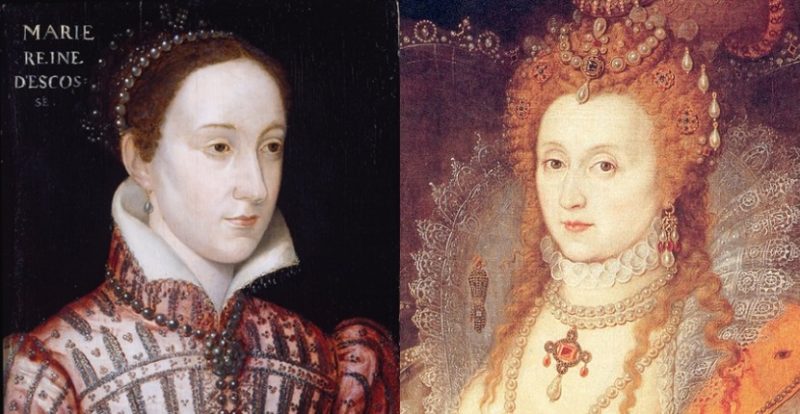The life of Mary Stuart, better known as Mary, Queen of Scots, was a stormy one. Mary was the queen of Scotland for more than two decades, but after she was suspected of having arranged to do away with her abusive husband and then marrying the doer of the deed, she was forced to abdicate and everything began to fall apart.
Afterwards when she fled to England to seek the support of her cousin, Queen Elizabeth of England, she ended up making a mortal enemy instead of gaining an ally. But first the backstory.

Mary and Elizabeth’s relationship, far from one of familial support or royal alliance, became one of protracted viciousness which culminated in the imprisonment and demise of Mary at her cousin’s order.
Their stormy relationship was, surprisingly, carried on without the two women ever actually coming into each other’s presence; their feud was carried out entirely through letters, and through the dark machinations of politics.

It didn’t help that at the start of her career, Mary had a legitimate claim to succeed to the throne of England after Elizabeth. Mary asked Elizabeth to confirm her as successor, but Elizabeth – wisely, one would think – decided that this would not be a good idea. Instead she stated: “If it became certainly known in the world who should succeed me, I would never think myself in sufficient security.”
If Mary had been named and confirmed successor, Elizabeth would have made herself a target for those who wanted Mary to come into her inheritance sooner!
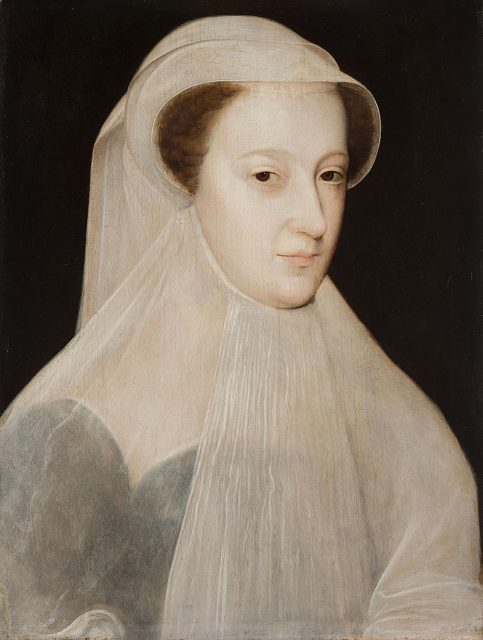
Despite refusing to name her as successor, Elizabeth still saw Mary as a threat, and to counter this threat she decided to put someone she trusted as close to Mary as she could.
To this end, when Mary’s husband died, Elizabeth pushed for Mary to marry Sir Robert Dudley, the Earl of Leicester. Elizabeth herself declared, “The Earl of Leicester is my brother and best friend. I would have married him myself, but I have decided to remain a virgin. I therefore heartily recommend the Earl to my cousin of Scotland. In fact, if she married Leicester, I would even look favourably on her claim to the English Succession.”
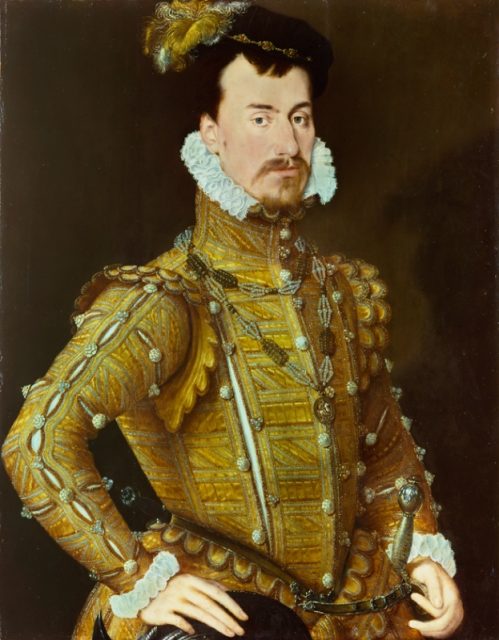
This might have seemed like a favorable arrangement, but the rumor was that Elizabeth and Dudley’s relationship was not as pure as Elizabeth would have had people think; they were rumored to be lovers.
It seems that Elizabeth wanted Dudley to marry Mary because she would then have had an entirely reliable source of intelligence as close to her rival’s court as it was possible to be, and probably a great deal of influence. Not surprisingly, Mary rejected this proposition, marrying her cousin, Lord Darnley, instead. This proved to be a mistake.

Darnley proved himself an abusive lover of the bottle, and perished in highly suspicious circumstances a few years later. Mary then promptly married the man who was implicated in this act, which brought about her forced abdication and the beginning of her downfall.
Perhaps she would have been better to take up Elizabeth’s offer? It turns out that throughout this debacle Elizabeth repeatedly wrote to Mary warning her against Lord Darnley. In hindsight, history might have been quite different if Mary had heeded her cousin’s warning.

After Lord Darnley’s suspicious end, the Lords of Scotland forced Mary’s abdication and cast her into prison. She escaped, however, and fled to England, because her cousin Elizabeth had written to her promising aid. When Mary arrived in England, however, she found that the promised help was not forthcoming. Instead, Elizabeth just stopped answering her letters. Mary wrote pleading to her cousin, trying gifts and even threats, but ended up being imprisoned in turn by Elizabeth.
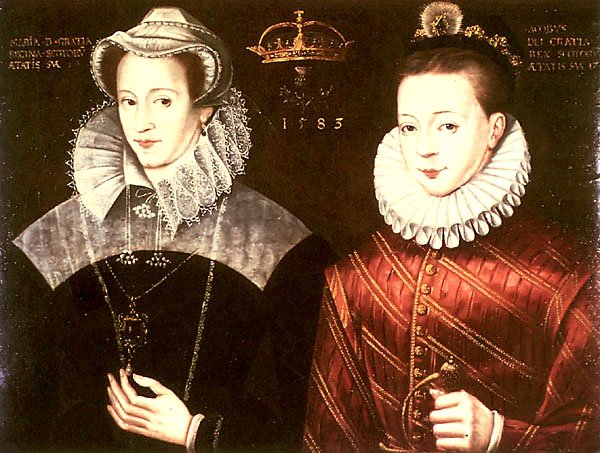
During the imprisonment the relationship between the two women understandably deteriorated. Repeated attempts at rebellion against Elizabeth were made by groups of English noblemen in Mary’s name. One of these – the Babington plot – ended up being Mary’s downfall.
Mary wrote a letter in which she strongly expressed her support for the plot, but the letter was intercepted and eventually lead to Elizabeth’s trying and executing Mary for treason. Mary was in prison for 19 years, and this meant that her son, James, did not ever know his mother. He remained in Scotland as King James IV until his accession in 1603. He had four different regents until he reached the age of 18.

Eventually, after 19 years, the exposure of the Babington plot forced Elizabeth to call for Mary’s execution. It may seem surprising that after such a long running rivalry Elizabeth would not have taken this option sooner, but it must be remembered that in those days the rule of royals was seen as the directly expressed will of God.
Related video: Old Forgotten English Words That Need a Comeback
https://youtu.be/MfebN6UUQ5I
As such, for one legitimate ruler to execute another was seen as regicide and could have been seen as defying divine will. These were things no ruler wanted to be associated with; it was bound to cause disruption and discontent. However, Elizabeth had no choice, and having put off the decision for nearly two decades she finally ordered Mary to be tried for treason.
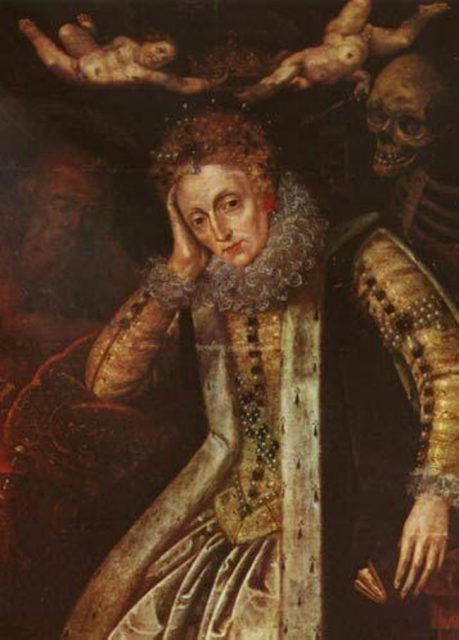
Mary, Queen of Scots, lost her head on February 8, 1587 at Fotheringhay Castle at the age of 44. But that was not the end of their rivalry. It was said that when Mary received news of her impending execution, she welcomed the approach of it, and loudly claimed her innocence of any crime of treason.
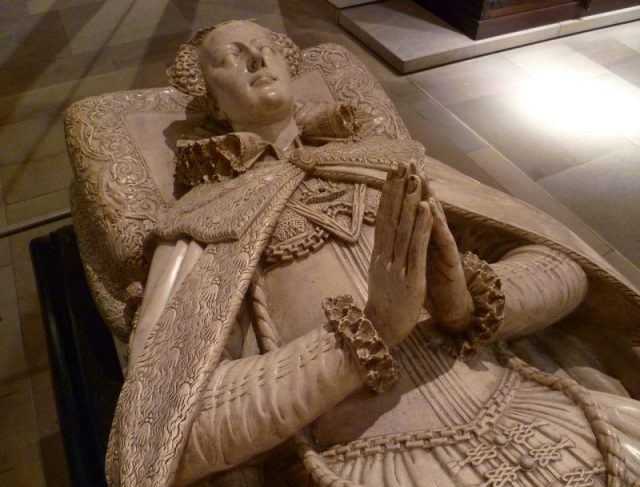
She was executed nonetheless, but her fate haunted Elizabeth. It was said that Queen Elizabeth had visions of Mary as she lay upon her own deathbed, and was said to have wept and repented of her cousin’s demise.
In a final ironic twist to this lifelong tale of rivalry, after Elizabeth died she ended up being succeeded by Mary’s son James, who ruled both Kingdoms until his death in March, 1625.
Correction: In the original article we misstated that Mary’s son James was brought to the court of Elizabeth and even called her “mother”. This is inaccurate and we have amended it. The correction was made on 4/28/19.
